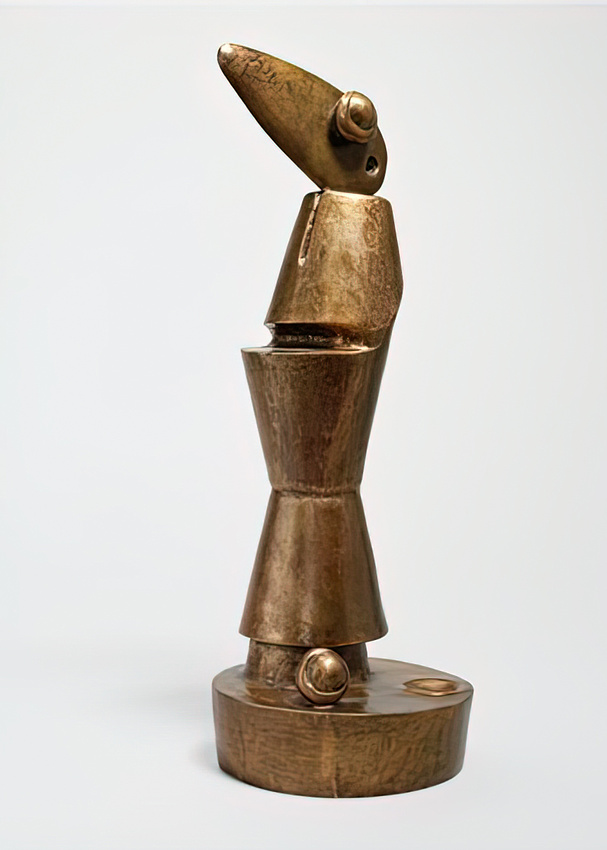What the Heck Is That?


What the Heck Is That?
Conditions looked promising. My favorite weather app, Windy, predicted a cloud-free sky east to the rising full moon. And clouds to the north looked encouraging for a colorful sunset sky in that direction. So, fellow photographer Scott Fuller and I decided to meet at the Chicago Museum Campus last Sunday evening.
We arrived an hour before sunset. It didn’t look good. There were clouds on the horizon to the east and no clouds to the north.
After 20 minutes, hope gave way to reality. We started scrambling to find something, anything, to photograph. Scott looked up towards Lake Shore Drive and pointed out a sculpture I had never seen before.
It was a piece by Ewerdt Hilgemann named Habakuk [Homage to Max Ernst]. The work was completed in 2014 and installed in Chicago’s Museum Campus in September 2015. It held promise as an interesting foreground.
Walking around the sculpture, I noticed some high clouds to the southwest that might catch some sunset color along with several striking condos in the background. It was serendipity.
The Artist
German-born, Amsterdam-based sculptor Ewerdt Hilgemann began as a strict adherent of rigid, mathematical sculptures. His approach changed in the early 1980s when he decided he liked the idea of bringing a natural power, implosion, to his work.
Since 1985, Hilgemann has been vacuuming the air out of welded-steel cubes and rectangles to create his iconic “Implosion” sculptures.
Habakuk [Homage to Max Ernst] was fabricated from heavy, stainless steel plates divided into three parts. The perfect, geometrically pure stainless-steel forms were meticulously welded and polished to satin gloss. Using a vacuum pump, outside air pressure then “shaped” (imploded) the piece.
In a delicate balance of planning and chance, each piece acquires an individual character and shape. The final name of Hilgemann’s work is always decided after the vacuum process is over. It depends on the associations it brings to the artist. In this case, the birdlike beak form recalled the sculpture Habakuk by Max Ernst.
So, Who Is Max Ernst?
Max Ernst (1891–1976) was a prolific German painter, sculptor, graphic artist, and poet. After his traumatic service on both the Eastern and Western fronts in World War I, he was concerned that a civilization claiming the moral and intellectual high ground could produce something as base and sickening as trench warfare.
He expressed his concerns by mocking social and artistic conventions. His statue Habakuk takes aim at the minor Jewish prophet, Habakkuk (spelled with one “k” in German).


Habakuk by Max Ernst. Source: max-ernst-habakuk.jpg (470×470) (artnet.com)
In chapter 2, verse 18 of the book of the Old Testament that carries his name, the prophet condemns those who make sculptures: “Of what use is the carved image, that its maker should carve it? Or the molten image, the lying oracle, that its very maker should trust in it, and make mute idols?”
According to art historians, Ernst’s ironic homage to the critic may be depicting Habakkuk as a molten bronze idol.
Or perhaps there is a second, more ominous meaning? In the book of Habakkuk, the prophet has a vision of the end of the world: the rise of a fierce and ruthless army and the destruction of animals, land, and city. Ernst lived in Germany during the 1930s at a time when the Nazi party was on the rise. Hitler seized control of the country in 1933 and Ernst sculpted Habakuk just a year later. An army was indeed gathering, and the “End of the world” was not far off.
Soon after the German occupation of France, Ernst was arrested by the Gestapo, but managed to escape and flee to America. He later moved to Sedona, Arizona and was a founder of the colony of artists in that town.
Thanks for looking,
Chuck